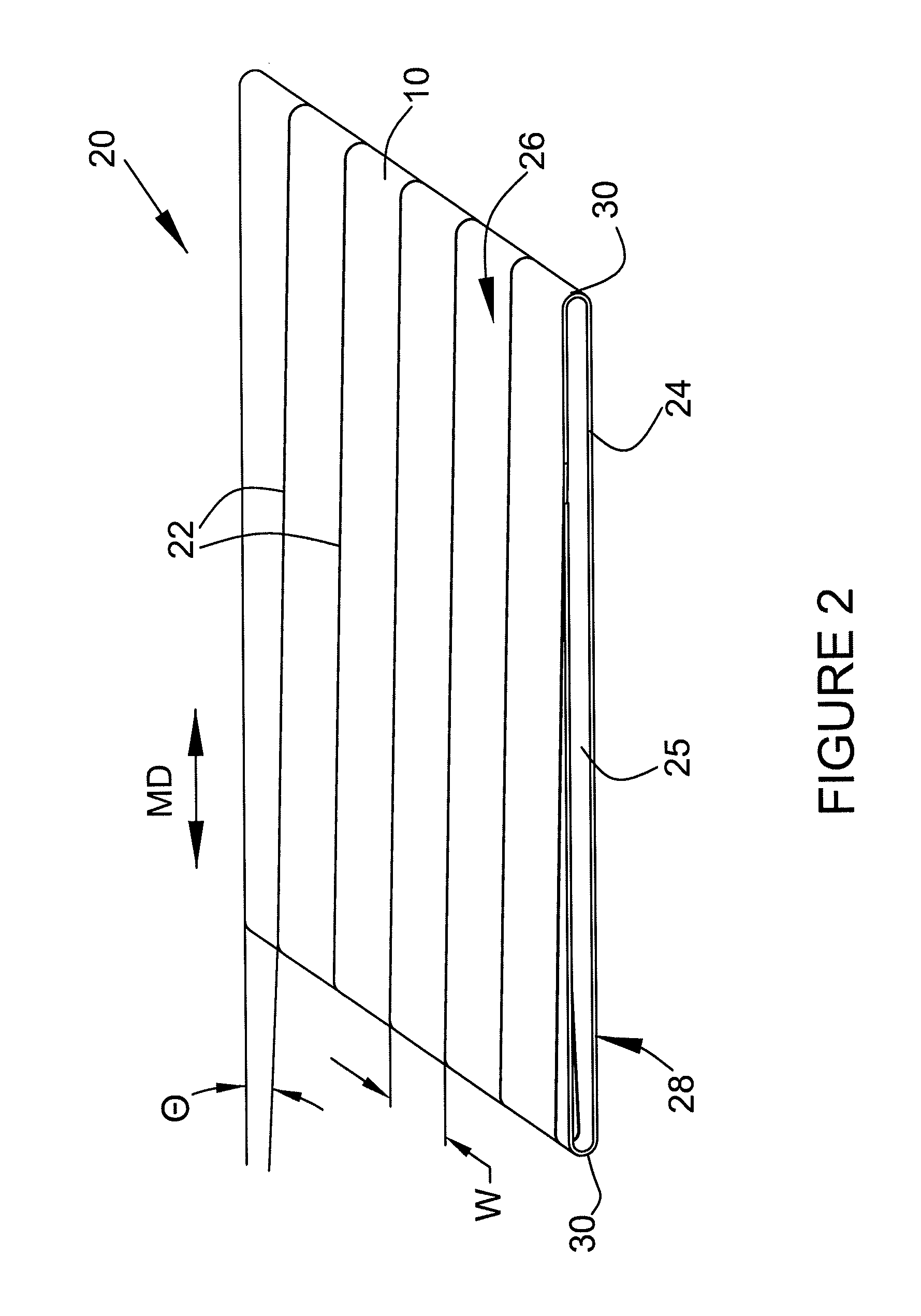Multiaxial press felt base fabric including cabled monofilaments
a multi-axial press and felt technology, applied in the press section, textiles and papermaking, papermaking, etc., can solve the problem that no prior art solution provides a base fabric construction, and achieve the effect of increasing operational life, maintaining batt fiber mass uniformity, and uniform dewatering
- Summary
- Abstract
- Description
- Claims
- Application Information
AI Technical Summary
Benefits of technology
Problems solved by technology
Method used
Image
Examples
Embodiment Construction
[0077]As described herein, the term “warp” refers to component fabric yarns which are oriented in the intended machine direction, or MD, of the fabric, while the term “weft” refers to fabric yarns which are oriented perpendicular to the warp in the cross-machine direction, or CD, of the fabric and are interwoven with the warp yarns. As the vast majority of these precursor strips are flat woven, meaning the warp is paid out from a back beam at the loom as it is interwoven with the weft yarns, the terms “warp” and “weft” will generally be synonymous with the terms “MD” and “CD”.
[0078]As used herein, the term “cabled yarn” refers to yarns comprised of at least two monofilaments which are joined together by twisting according to known means. For example, in a 2×2 construction, one pair of yarns that has been wrapped together are again twisted with one other similar pair of twisted monofilaments to provide a cabled yarn comprised of at least 4 monofilaments; a 2×3 construction would be c...
PUM
 Login to View More
Login to View More Abstract
Description
Claims
Application Information
 Login to View More
Login to View More - R&D
- Intellectual Property
- Life Sciences
- Materials
- Tech Scout
- Unparalleled Data Quality
- Higher Quality Content
- 60% Fewer Hallucinations
Browse by: Latest US Patents, China's latest patents, Technical Efficacy Thesaurus, Application Domain, Technology Topic, Popular Technical Reports.
© 2025 PatSnap. All rights reserved.Legal|Privacy policy|Modern Slavery Act Transparency Statement|Sitemap|About US| Contact US: help@patsnap.com



